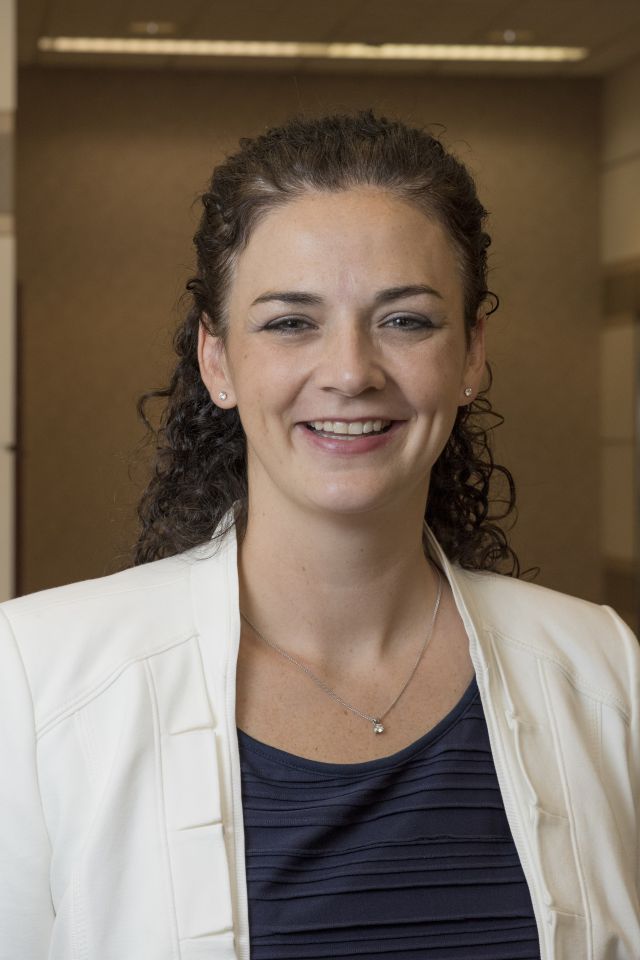Elizabeth Cosgriff-Hernandez, Ph.D., Professor, The University of Texas at Austin, "Applications of conductive hydrogels in cardiac rhythm management"

Speaker:
Elizabeth Cosgriff-Hernandez, Ph.D.
Professor of Biomedical Engineering
The University of Texas at Austin
Faculty Host: Beth Pruitt
Title: Applications of conductive hydrogels in cardiac rhythm management
Abstract:
Ventricular arrhythmias are the leading cause of sudden death in the United States. It is well established that abnormal conduction velocities in scarred or diseased myocardium result in ventricular arrhythmias with delayed conduction velocity. Once formed, re-entrant wavefronts rapidly propagate, causing chaotic cardiac activity that leads to loss of organized cardiac contraction, loss of cardiac output, drop in tissue perfusion, and, if left untreated, death. Current options for prevention of ventricular arrhythmias are severely limited. Ablative strategies to kill the tissue responsible for the re-entrant circuit carries, although widely adopted, can lead to a recurrent arrhythmia in 18 - 40% of cases. Radiofrequency ablation also carries substantial risk of life-threatening complications including thermal damage to tissues other than the myocardium and steam pops, vapor bubbles that can coalesce and burst and cause resulting in cavitations in the tissue. In high-risk patients, an implantable cardioverter-defibrillator (ICD) is used to deliver a depolarizing wavefront that captures enough tissue area to extinguish re-entrant wavefronts. However, life-saving defibrillation requires high energy that vastly exceeds the pain threshold and results in severe diminution of quality of life. To address this pressing need, our cross-disciplinary team with expertise in material science, electrophysiology, and clinical practice developed a new conductive hydrogel platform. We have demonstrated that this conductive hydrogel can serve as 1) an injectable hydrogel electrode that normalizes conduction across scarred myocardium and reconstitutes native intrinsic conduction; 2) a tissue interface for ablative catheters to limit steam pops and provide uniform ablative lesions. We utilize these materials to advance fundamental studies of how conductive hydrogels interface with myocardial tissue and then utilize polymer engineering to translate these findings into clinical therapies. As such, this conductive hydrogel platform will pave the way for medical device innovation to transform cardiac rhythm management.
Bio:
Elizabeth Cosgriff-Hernandez is a Professor of Biomedical Engineering at The University of Texas at Austin and holder of the Cullen Trust for Higher Education Endowed Professorship in Engineering. She received a B.S. in Biomedical Engineering and Ph.D. in Macromolecular Science and Engineering from Case Western Reserve University under the guidance of Professors Anne Hiltner and Jim Anderson. She then completed a UT-TORCH Postdoctoral Fellowship with Professor Tony Mikos at Rice University with a focus in orthopaedic tissue engineering. Dr. Cosgriff-Hernandez joined the faculty of the Biomedical Engineering Department at Texas A&M University in 2007 prior to moving to The University of Texas at Austin in 2017. Her laboratory specializes in the development of polymeric biomaterials to improve clinical outcomes of medical devices and regeneration strategies. She is a co-founder of Rhythio Medical, on the scientific advisory board of ECM Biosurgery, and a consultant to several companies on biostability evaluation of medical devices. Dr. Cosgriff-Hernandez is an Associate Editor of the Journal of Materials Chemistry B and Fellow of the International Union of Societies for Biomaterials Science and Engineering, Biomedical Engineering Society, Royal Society of Chemistry, and the American Institute for Medical and Biological Engineering. She has previously served as an Associate Editor of the Journal of Biomedical Materials Research, Part B and chair of the NIH study section on Musculoskeletal Tissue Engineering.